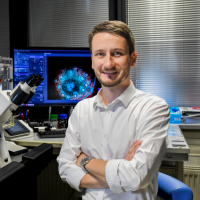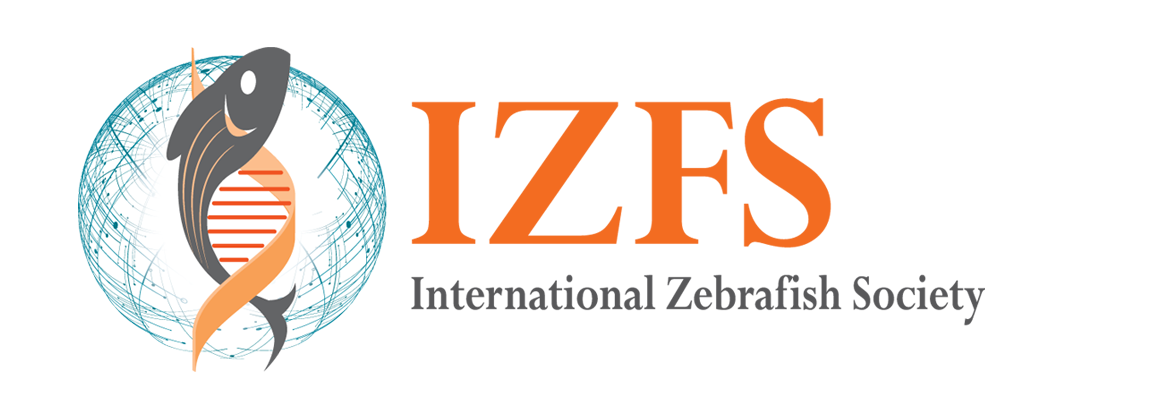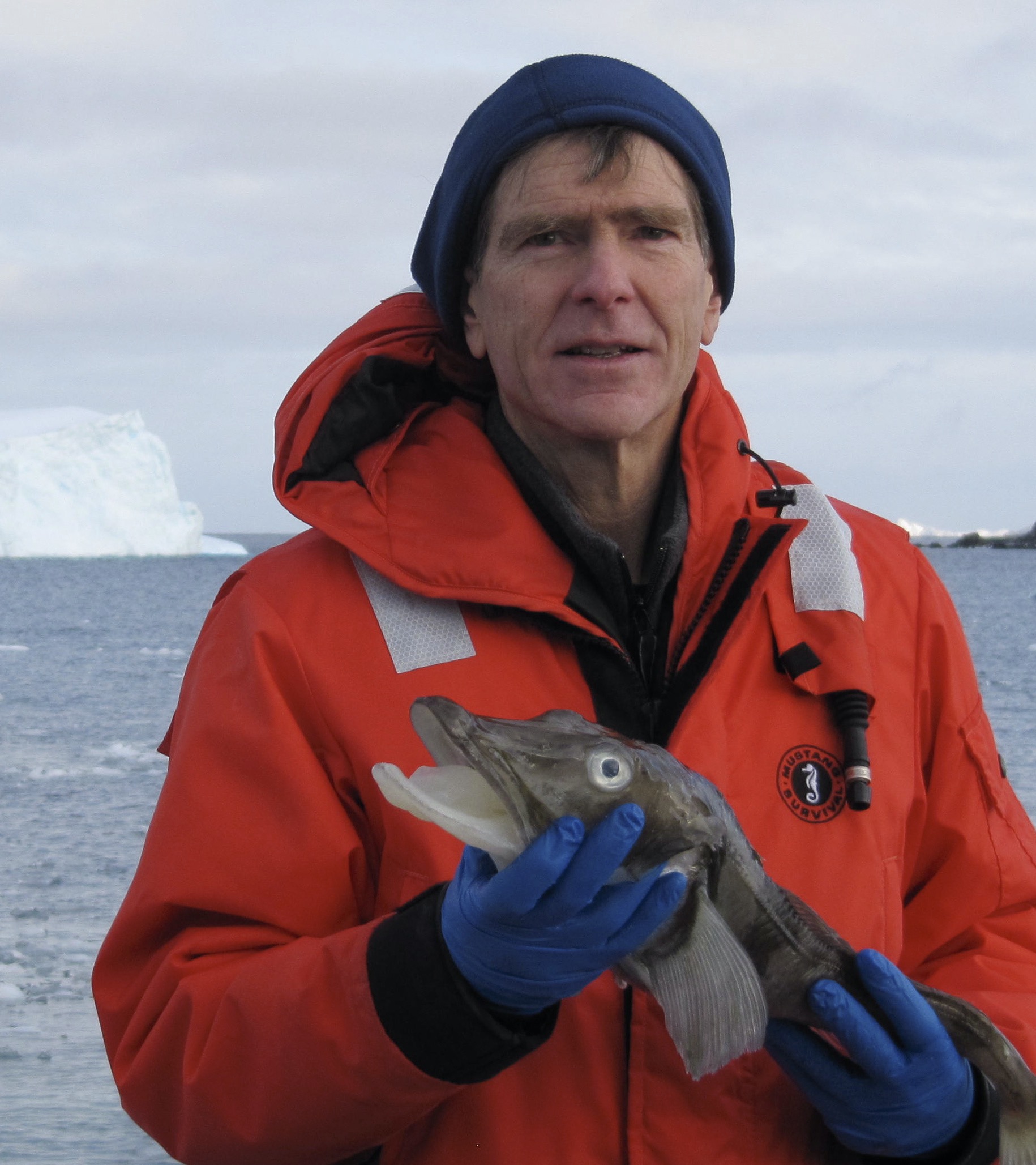Meet the IZFS Award Winners
Professor of Biology
University of Oregon
Eugene, Oregon, USA
The IZFS George Streisinger Award recognizes a senior investigator who has done sustained and foundational work that has opened new possibilities within the zebrafish field that benefit all research today. Among the criteria that may be considered are contributions in the form of conceptual advances that have opened important new research directions, development of tools or resources that have been transformative in enabling new research possibilities and service to the Zebrafish research community
Questions:
What is the research focus of your lab?
Our lab is interested in how genetics control the way animals get to be the way they are in terms of how they look, act, and function. How species got that way over evolutionary time, and how individuals get that way over developmental time. We started working on these questions using Drosophila and focusing on Hox genes. In the mid 1960’s, homeotic mutants had been discovered in flies, but we did not understand how they alter pattern formation and cell fates, and it would be 20 years until the cloning of Hox genes. To understand the developmental mechanisms of homeotic transformations, I began in 1966 to use somatic recombination to mark clones of cells in Drosophila Antennapedia mutants, which have their antennae variably replaced by leg parts. Results showed that specific leg parts replaced specific antennal parts, and that once initiated, cell fate determination is either clonally inherited (e.g., fated to homoeotic leg) or imposed by surrounding cells (e.g., to be a specific part of a homoeotic leg)1. ork since has focused on the evolution of developmental mechanisms, as zebrafish became the ‘fruit fly’ of vertebrate developmental genetics.
How long have you been working with zebrafish?
In the early 1980’s, labs in Oregon and elsewhere were beginning to make embryonic lethal mutations in zebrafish to develop a genetic model for vertebrate embryology. Without a genetic map, and with a genome sequence still three decades away, molecular genetic analysis faltered. To contribute to solving this problem, we developed novel molecular techniques that capitalized on George Streisinger’s gynogenetic zebrafish methods to produce the first meiotic genetic map of the zebrafish genome, and simultaneously, our undergraduates mapped the first nine zebrafish mutations2. The map helped postdocs (including Will Talbot and Steve Johnson) to clone some of the earliest zebrafish mutants3. Lab post-docs Bernard Thisse and Christine Thisse developed protocols to make beautiful in situ hybridization studies of gene action in zebrafish embryos4. Initial attempts at sequencing the zebrafish genome provided only disconnected fragments due to high rates of polymorphism. To solve this problem, Joy Murphy in our lab made doubled haploid zebrafish that are homozygous at every locus from two divergent stocks, which Kirstin Howe and Matt Clark in Hinxton used to make the most detailed meiotic genetic map of any animal, leading to a chromosome-level assembly of the zebrafish genome5, thus spurring the utility of zebrafish as a human medical model.
In the late 1980’s, as we and others began to clone zebrafish genes, it became apparent that for many developmental regulators, zebrafish had two copies of single-copy human genes, but no one knew whether these ‘extra’ copies were due to tandem duplications or other genomic events. When we placed zebrafish duplicated genes on our genetic map6, I realized that they were organized in duplicated chromosome segments and that zebrafish have two copies of nearly all human chromosome segments. This result is expected only from a whole genome duplication event in the zebrafish lineage. Lab post-doc Angel Amores cloned the zebrafish hox clusters, and when we put these genes on our map, results showed that zebrafish have two copies of three of the four mammalian HOX clusters and one of the other and that, furthermore, these had orthologous cluster copies in the distantly related pufferfish. This finding meant that the genome duplication occurred before the divergence of zebrafish and pufferfish lineages7. This evidence showed definitively that a whole genome duplication (the Teleost Genome Duplication or TGD) occurred at the base of the teleost radiation and thus affects half of all vertebrate species. Duplicated genes from the TGD likely facilitated the origin of this wondrous explosion of biodiversity.
After genome duplication, organisms retain both copies more frequently than would be expected for redundant genes. S. Ohno suggested in the 1970’s that duplicate retention happens because one copy maintains the old function, and the duplicate evolves a new function. We investigated the expression patterns of genes duplicated in the TGD compared to the expression of their single-copy orthologs in mice. Results showed that expression patterns of the ‘a’ and ‘b’ gene copies in zebrafish embryos tend to add up to the expression pattern of the single ortholog in mouse embryos, as for the skeletal and gonadal development gene Sox9 8 or the limb and brain gene Engrailed-19. Graduate student Alan Force in the lab developed the novel concept of ‘subfunctionalization’ to refer to duplicate gene retention due to the reciprocal sharing of essential ancestral functions, for example when the two copies reciprocally lost ancestral gene regulatory elements or ancestral protein domains9,10. In addition, Alan realized that Ohno’s idea (for which we introduced the term ‘neofunctionalization’), would work only if the gene with the new function also lost an old essential function that the other copy retained so the two copies each have a unique, positively selected function. This concept has had substantial influence as evidenced by its citation over 3900 times. To represent the unduplicated genome of a teleost fish ancestor, post-doc Ingo Braasch sequenced the genome of spotted gar, a member of the unduplicated sister lineage of teleosts, and showed that the gar genome acts as a bridge to identify conserved non-coding elements shared between zebrafish and human11.
How long have you had your own lab?
I joined the faculty and started my lab at the University of Oregon in 1971 after a post-doc at Harvard University and have been lucky to have wonderfully long-term collaborative colleagues, especially Charles Kimmel, Judith Eisen, Monte Westerfield, and Jim Weston.
Getting to know you better
Where were you born/where did you grow up?
I was born in Kittery, Maine, USA and grew up in Lafayette, Indiana, USA, where my father was a botany professor at Purdue University. He grew up on a small family farm high on a ridge in West Virginia, hillbillies miles from nowhere, but he loved farming. The GI Bill after World War Two took him to graduate school, and as a professor, he studied plant physiology and developmental genetics. He was the first to use radioactive labels shortly after they first became available after the War to follow the pathway of water flow in the xylem of a tree and how it moved around cuts he made nearly halfway across the trees. He also used histology to show the cellular mechanisms of knotted, a mutation that causes corn leaves to form knots in the vasculature; curiously, later others showed that knotted is a homeobox gene related to the ones I studied in Drosophila. And he used the scientific method to solve everyday problems around the house. “Why doesn’t the lamp turn on?” He would hypothesize it is because the bulb is burnt out. He’d then make a Prediction: if so, then doing a transplantation experiment by replacing the bulb in the lamp that doesn’t work with a bulb that works in another lamp should lead to a working lamp. Then he’d perform the experiment and draw a conclusion, maybe discarding that hypothesis and making another. Mother was the librarian at the Purdue Department of Horticulture. As you can see, my path toward a science career was much easier than it is for most people.
Tell us something about yourself in one sentence.
I have run a marathon on every continent.
Science
Which of the current projects in your lab you are most excited about?
What are the molecular genetic mechanisms that cause gonads in wild zebrafish to develop into an ovary or a testis? We mapped the wild sex locus to the tip of the long arm of Chr4 to a region with several hundred genes12. Chromosomally ZZ zebrafish are all males; most ZW zebrafish are females, although a few develop as males, especially when the fish are stressed. Many sex-linked genes are somewhat different in sequence between the Z and the W chromosomes. I want to know which gene and which nucleotide differences between the Z and W are responsible for the gonad becoming an ovary or testis. Then I want to know how that gene works. We hypothesize that a gene on the W is necessary, but not sufficient, to turn the gonad into an ovary. This major sex determining gene (MSD) likely acts by causing somatic cells surrounding the germ cells to express the gene that encodes aromatase, the enzyme that converts testosterone into estrogen. All gonads make testosterone, but only ovaries convert most of it to estrogen. Estrogen then causes germ cells to differentiate into oocytes rather than spermatocytes. ZZ gonads do not convert much testosterone to estrogen and the testosterone causes the gonads to become testes. The questions are: What is the MSD gene on the W version of Chr4? And how does that MSD gene promote aromatase gene expression and hence estrogen production?
What advice would you give to someone considering a career in science/research?
Do it because it is fun. If it’s not fun for you, do something else.
Which part of the PI job you enjoy the most? Why?
Working with people in my lab and thinking with them about how to learn how genes make a zebrafish.
Outside of work
What do you enjoy doing outside of work/lab?
I enjoy running every day with my running buddies and getting into the mountains for trail runs as often as possible.
What career would you have liked if you were not a scientist?
Hmm. Not sure. I never considered anything else. Maybe a physician.

Assistant Professor of Biology
Masaryk University
Brno, Czechia
Photo Credit: Marketa Krizova
The IZFS Chi-Bin Chien Award recognizes outstanding graduate students, postdoctoral trainees, or recently appointed faculty members from any country who have made significant contributions to the field of zebrafish research and have exhibited the generosity and openness that characterized and motivated Chi-Bin Chien.
Questions:
What is the research focus of your lab?
The mission of my lab is to understand fundamental processes underlying the development and maintenance of vertebrate organs.
What do you like about working with zebrafish? What don’t you like about it?
I love the in vivo possibilities. Sometimes it’s challenging to convince people that a fish model can provide informative insights and be useful for understanding human inborn diseases or development.
Getting to know you better
Where were you born/where did you grow up?
I was born in Czechoslovakia (now Slovakia) and I grew up next to the Polish border.
Tell us something about yourself in one sentence. When did you realize you wanted to be a scientist?
I wanted to be scientist since my childhood, but I made a conscious decision during my PhD studies. I realized there is a universe to discover, and I could contribute to new biological knowledge.
Where did you do your undergraduate studies? Did you do research with anyone?
I completed my Bachelor’s and Master of Science degree in Bratislava, Slovakia, studying Biochemistry with Professor Horvath.
Where did you do graduate studies and with whom?  What did you work on?
For my PhD, I decided to study Evolutionary and Developmental biology in Prague under the guidance of Dr. Zbynek Kozmik. We published work on early development of cephalochordate amphioxus and medaka fish. I also worked on the early brain development in medaka.
Where did you do postdoctoral studies and with whom?  What did you work on?
After my PhD, I initially joined Dr. Robert Cerny's lab in Prague, where we studied the development of non-teleost fishes. After six months, I found my dream postdoc position in the Crump Lab. With Professor Crump and fantastic zebrafish lines from the community, I discovered that the vertebrate pituitary gland may have more complex developmental and evolutionary aspects. Together with a lovely team of PhD students, we published a comprehensive study of neural crest cell derivatives during development and in adulthood.
Science and Careers
Share a turning point or defining moment in your science/career.
Every period had its own. Words of encouragement, observation of embryo, but the most recent one was observing the direct contribution of endodermal epithelia to the anterior pituitary primordium.
If you could be present for any "Eureka" moment in history (i.e. the moment some scientific discovery was made), which moment would you choose? Why?
Nature is full of wonders which are waiting for you to explore. Don’t just follow others’ steps; trust yourself to find and walk on your own path.
What advice would you give to someone considering a career in science/research?
Advice is extremely subjective.
Where do you think the next scientific breakthroughs are going to occur?
Scientific breakthroughs can emerge unexpectedly from unexpected places. I hope we handle the AI “revolution” wisely.
What is the most challenging part about your science or obtaining your career goals?
I think, managing my time.
Outside of work
What do you enjoy doing outside of work/lab?
Spending time with my family and inline skating.
What are you reading right now (not including research papers)?
I'm reading a book titled 'Abandoned Society' by Erik Tabery, which is about the Czech journey for democracy.
Name a favorite song or musical piece.
“Voodoo People” by The Prodigy.
Favorite place you have lived or visited?
Bryce Canyon National Park in Utah stole my heart when I saw it.
What alternative career would you like to attempt if you could?
I think I would be a physician.
Provide a quote that speaks to you.
Enjoy your life today!





